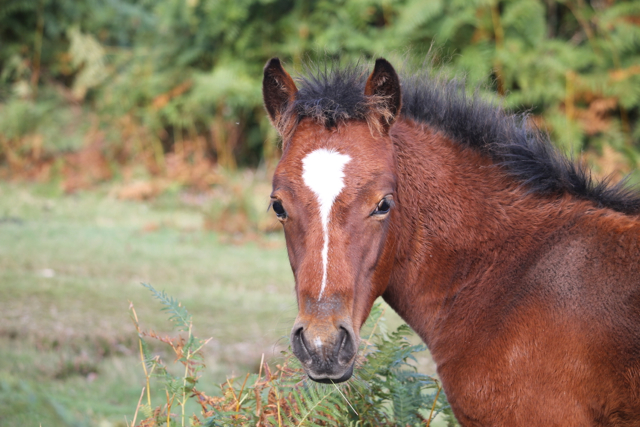The month of May brings warm sunshine that transforms the Forest landscape. Everywhere nature stirs. The emerging foliage of the trees, hedgerows and heathland grasses blend in many shades of verdant colour. With the warmth and flush of new growth comes the birth of the next generation of New Forest pony. The foals represent the continuance of a native breed of pony that has been intimately associated with the area for thousands of years. There have been equines living in the vicinity of what is now known as the New Forest since before the last Ice Age; remains dating back to 500,000BC have been discovered within 50 miles (80 km) of its centre and other finds, such as the Linwood pot that shows a mounted rider, indicate established domestication of ponies from at least 300AD.
Walking in the Forest is always pleasure, but more so when there are foals about. All the ponies that roam the Forest are either mares or geldings (neutered males) and licenced stallions are only allowed on the Forest to breed, usually for four weeks any time between April to July. The Verderers’ byelaws stipulate that any colt foal, which ‘on the first day of February in any year is in the second or subsequent calendar year after its birth’, is not allowed to roam the Forest. All free-roaming stallions must be approved. The bloodlines of the New Forest pony are thus protected to ensure that the high standards of the breed are maintained. However, there have been many past attempts to ‘improve’ the New Forest pony either by removing smaller animals, as in Tudor times; by introducing other breeds of horses, such as thoroughbreds and Arabians, to make them more refined and showier as in Victorian times; and by mixing bloodlines with Dartmoor, Exmoor and even Highland ponies to reintroduce traditional native breed properties.
Even with all this mixing, improving and introducing of different qualities and bloodlines the New Forest pony tends to conform to a definite type. One commentator observed that the power of Nature tends to ‘grind down and assimilate these types to the one most suited to the land’. The New Forest pony is known as the ‘architect’ of the Forest because it shapes the land with its grazing and browsing activities. The landscape has, in its turn, shaped the pony making it hardy and versatile, able to withstand a life lived in the ‘wild’. With the onset of summer it will be no time before the next generation of foals born on the Forest will soon be taking their turn shaping and being shaped by the New Forest.




You must be logged in to post a comment.